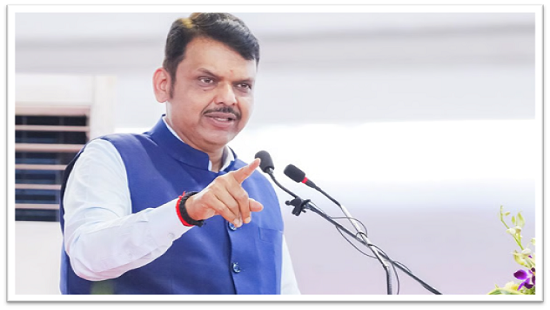
Maharashtra CM Devendra Fadnavis Unveils Rs 1,299 Crore Ghatkopar Redevelopment Project, Envisions a Slum-Free Mumbai
Mumbai’s skyline is set to change once again as Maharashtra Chief Minister Devendra Fadnavis announced the launch of a Rs 1,299 crore mega slum redevelopment project in Ghatkopar. The initiative marks a major milestone in the state government’s broader vision of creating a slum-free Mumbai that balances development, inclusivity, and dignity for all residents.
The announcement was made during the groundbreaking ceremony for the redevelopment of Mata Ramabai Nagar and Kamraj Nagar, two of the city’s largest slum clusters located along the Eastern Express Highway in Ghatkopar East. The project aims to transform these densely populated pockets into well-planned residential and commercial hubs featuring civic amenities, open spaces, and modern infrastructure.
A New Chapter in Mumbai’s Redevelopment Journey
Speaking at the ceremony, Chief Minister Devendra Fadnavis emphasized that Mumbai’s redevelopment model must evolve beyond the old framework of building “vertical slums.” He underlined the importance of creating self-sustaining communities equipped with gardens, health centres, and office spaces that promote both liveability and employment.
“We do not want to redevelop horizontal slums into vertical slums,” Fadnavis said, explaining that each project will include adequate open space, recreation areas, and essential services. Around 50 acres of land have already been identified for future cluster projects under this plan, which collectively aim to make Mumbai truly slum-free in the coming decade.
Deputy Chief Minister Eknath Shinde, who was also present at the event, highlighted the significance of this long-pending project. He recalled that discussions around Kamraj Nagar’s redevelopment began nearly 15 years ago during the Congress-led government under Prithviraj Chavan but gained real traction only under the current Mahayuti administration. He credited Fadnavis for resolving the structural and administrative challenges that had delayed progress for over a decade.
A Historic First for MMRDA and SRA
This redevelopment project also represents a historic shift in institutional roles. For the first time in its 50-year history, the Mumbai Metropolitan Region Development Authority (MMRDA) will serve as the project developer, while the Slum Rehabilitation Authority (SRA) will function as the planning authority.
This alignment between two major urban agencies marks a significant evolution in Mumbai’s housing governance model. By combining MMRDA’s technical and infrastructural capabilities with SRA’s social housing expertise, the state government hopes to fast-track large-scale redevelopment with greater efficiency, transparency, and accountability.
The Ghatkopar redevelopment spans 31.82 hectares and will be executed in phases. Phase 1 alone is valued at Rs 1,299 crore and will rehabilitate 4,345 of the 16,575 slum dwellers within a period of 36 months. Each eligible family will receive a self-contained 1BHK flat measuring 300 square feet. To ensure a smooth transition during construction, Rs 137.5 crore has been allocated for advance rent payments to displaced residents.
Building Communities, Not Just Structures
What sets this project apart is its focus on human-centred urban planning. Beyond providing housing, the redevelopment blueprint includes community gardens, gyms, and a primary health centre. It also integrates commercial units to encourage local entrepreneurship and job creation.
The project pays tribute to the legacy of the late martyr Murli Naik, whose family will receive a dedicated commercial unit in recognition of his sacrifice. This gesture underscores the administration’s intent to blend development with respect for local identity and history.
Officials also stressed that future slum redevelopment efforts will not only focus on physical infrastructure but also on fostering social cohesion and access to livelihoods. The long-term vision is to create communities that are economically active, environmentally sustainable, and socially inclusive.
The Economic and Social Impact
The scale of Mumbai’s slum rehabilitation challenge is immense, with an estimated 40 percent of the city’s population living in informal settlements. Projects like the Ghatkopar redevelopment are therefore more than just housing interventions—they are economic multipliers that can reshape neighbourhoods and stimulate local economies.
By integrating commercial and residential components, the government aims to generate employment opportunities close to home, reducing commuting stress and promoting balanced urban growth. Such mixed-use developments are known to enhance property values, improve urban aesthetics, and increase civic engagement.
Moreover, the redevelopment aligns with the broader goals of the Pradhan Mantri Awas Yojana and Maharashtra’s Housing for All mission. It also supports the government’s push for sustainable urbanization by encouraging better land utilization and improved civic infrastructure.
Governance and the Path Forward
The success of Mumbai’s redevelopment journey will depend on effective coordination among multiple agencies and transparent engagement with residents. The decision to position MMRDA as the developer reflects the state’s intent to streamline execution and minimize bureaucratic overlap.
The project is expected to set a benchmark for future cluster redevelopments across the city, especially in areas such as Dharavi, Kurla, and Bandra East. The administration’s approach combines large-scale planning with micro-level execution—ensuring that individual families benefit from collective progress.
By adopting a data-driven, citizen-focused model, the Maharashtra government is attempting to transform one of the most complex urban challenges into an opportunity for inclusive growth.
From Informal Settlements to Integrated Communities
The launch of the Ghatkopar redevelopment project signals more than a construction milestone—it represents a shift in the mindset of urban governance. The vision of a slum-free Mumbai is not just about replacing old homes with new buildings but about restoring dignity, security, and opportunity for thousands of families who have been waiting for change.
As bulldozers give way to new foundations and modern homes rise from the city’s older quarters, this initiative reflects the idea that development must be both equitable and aspirational. Under the leadership of Devendra Fadnavis and Eknath Shinde, Mumbai appears ready to embrace a future where every citizen can share equally in its progress—where every home stands as a symbol of both transformation and hope.





